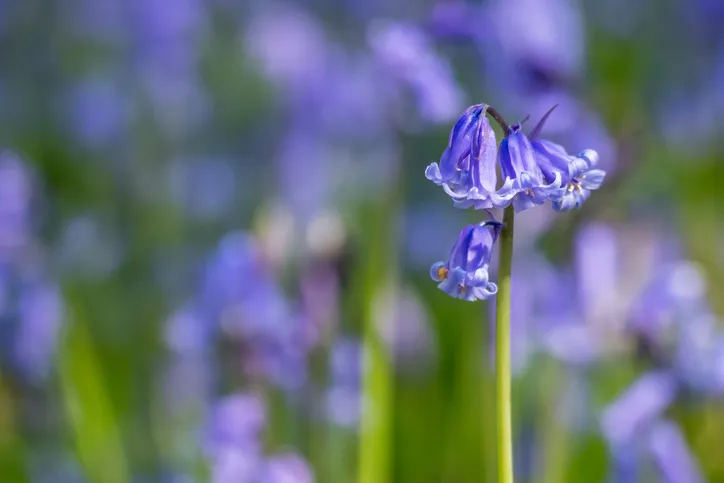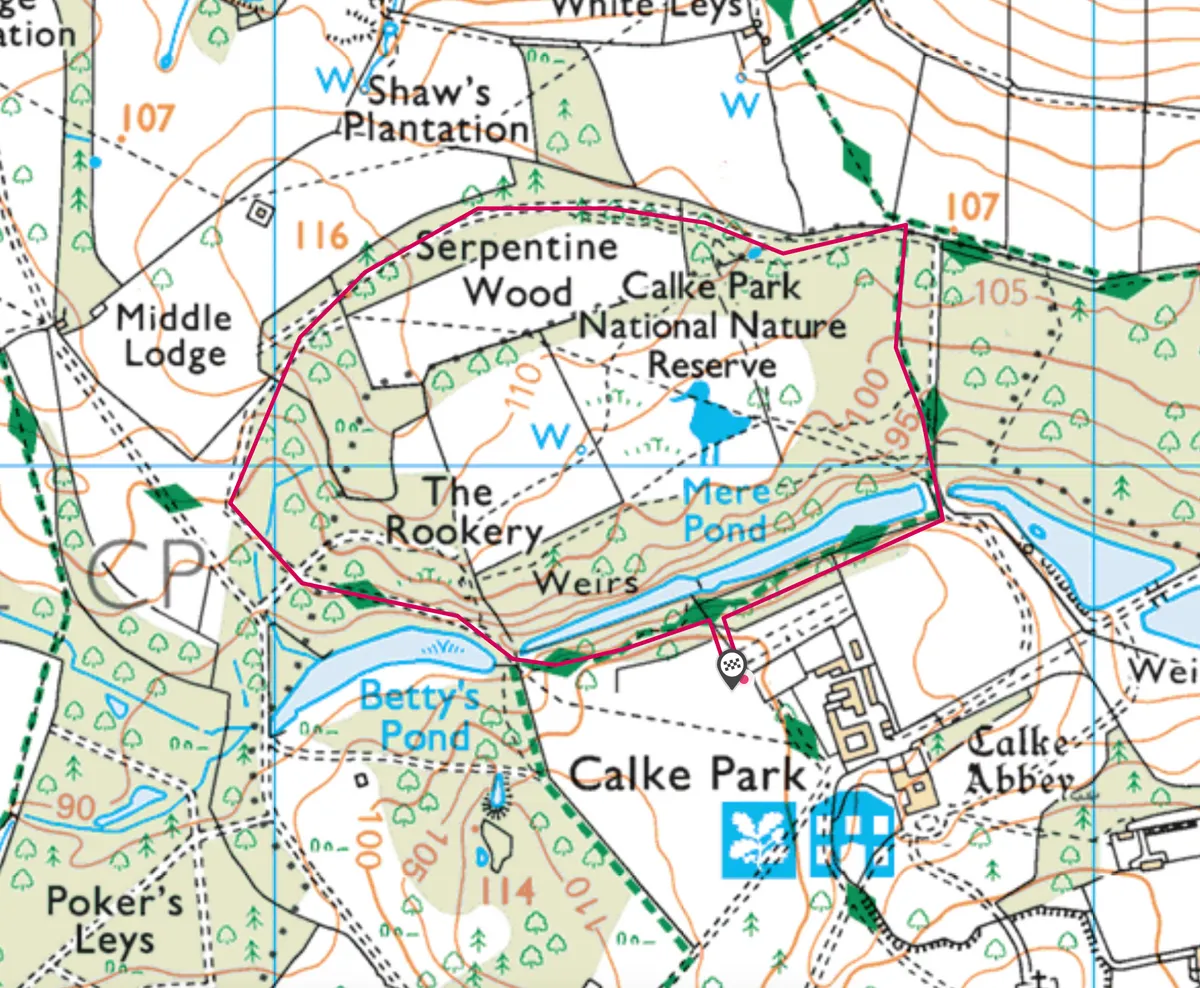There are few more memorable woodland walks than a springtime wander through a hazy, purple sea of bluebells, especially when the shimmering carpet has a stately house and 600 acres of glorious parkland as a backdrop.
Calke Abbey in Derbyshire is renowned for its display of bluebells, but before you set off, it’s worth checking with the National Trust at Calke to find out when the flowers are due – last year’s cold winter resulted in late blooms, while our recent mild February and sunny March may well make them flower early.

A 1.5-mile circular route around Calke Abbey in Derbyshire.
1. Start
This short walk begins at the main visitor car park next to the house. At the back of the field used for overspill parking, drop down to a series of tree-lined ponds. Turn right and follow the well-walked route as far as the deer enclosure fence, then go left beside this up to the far end. Here, go left alongside the estate boundary wall for the broad track through Serpentine Wood.
2. Serpentine wood
Such is the quality of its so-called wood pasture (a mix of grass and woodland grazed over centuries), that Calke Park is a designated National Nature Reserve and home to a diverse range of birds, beetles and fungi.
But it’s the purple wash of bluebells that makes Calke so special in April and May – and most are to be found in Serpentine Wood. Around half the world’s bluebells flower in Britain, and as the sight and sweet scent of thousands of nodding heads assaults your senses, you may be forgiven for thinking that most are located here at Calke.
Although the bluebell is regularly voted our favourite flower, it was once said that if you heard the tolling of the drooping, violet-blue bells you would fall under the fairies’ enchantment and never wake up. This belief may have something to do with the fact that bluebell bulbs are mildly poisonous, so much so that they were once used as a source of glue for bookbinding, since the toxins helped ward off damaging silverfish. The sticky sap from the leaves was also popular with archers, who used it to attach feathers to arrows.
3. Back to the abbey
Although numerous, the bluebells of Serpentine Wood are easily damaged by trampling, so remember to stick to the path and don’t be tempted to pick any. Eventually you emerge at a small car park where you should veer to the right of the Old Man of Calke, the name given to the hulking remains of an oak tree thought to be more than 1,000 years old.
The path dips to cross the end of a pond, then climbs to return to the car park by Calke Abbey, where you can stop for a rewarding lunch in the National Trust restaurant. It sources its ingredients from the estate’s farm. The wardens maintain the diverse wildlife habitats and look after 300 ewes, including rare Portlands, and red and fallow deer.
In recent years, our native bluebell (Hyacinthoides non-scripta) has been under threat from cross-breeding with its invasive Spanish cousin (Hyacinthoides hispanica), the cultivated variety, as well as milder springs that allow rival plants to flower earlier. Despite this, there are still plenty of woods where, for a short time in the spring, a nodding carpet of bluebells conjures up a scene so magical that there must be some fairy enchantment at work.
Other bluebell woods include Renishaw Hall near Chesterfield, Yoxall Lodge near Burton and Ecclesall Woods near Sheffield.
Map
Calke Park walking route and map.
